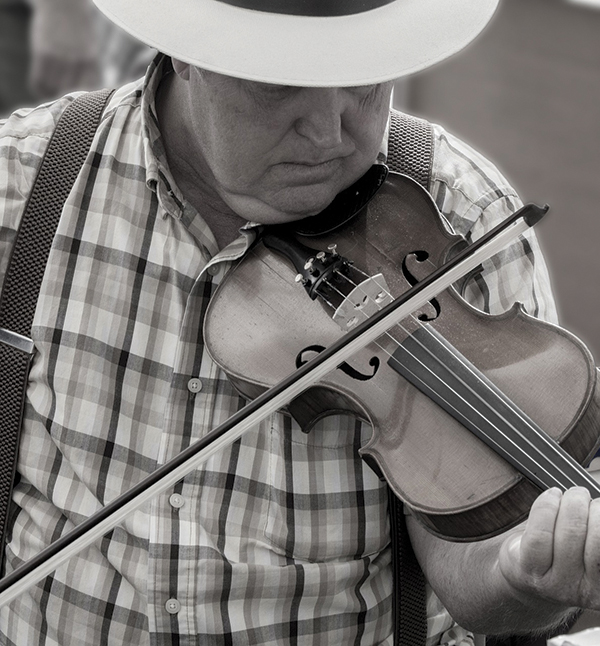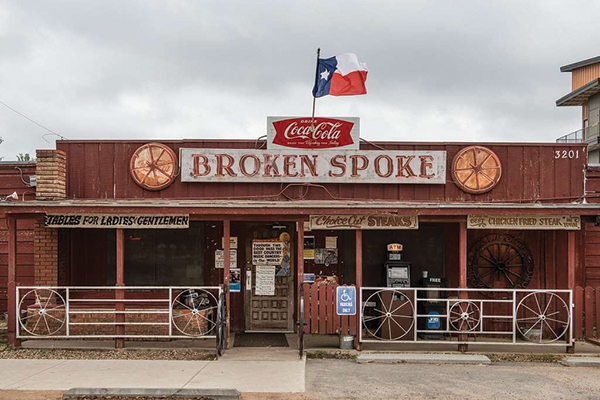Texas Two-Step
The Texas two-step began evolving from the foxtrot in the 1920s. The brisk “slow, slow, quick, quick” steps known to ballroom dancers as the international foxtrot are said to be related to the polka, Texas waltz, and the jitterbug. With no traveling turns or spins, it’s one of the easiest dances to learn and aspiring dancers need only head to Broken Spoke in Austin on an evening when dance lessons are held to master the movement.
In addition to great dancing, the ambiance and décor at the Broken Spoke virtually transport visitors back to 1964, when James W. White first opened the dance hall. Today, his daughter, Terri White, is whipping two-steppers into shape with a no-nonsense, sassy, quasi boot camp style of teaching. And, like a proud mama, she enjoys watching from the sidelines as her students glide around the dance floor to live music.
“Take more chances, dance more dances!” – Anonymous
“Dancing is a perpendicular expression of a horizontal desire” – George Bernard Shaw
Texas Waltz

The waltz began as a dance for European aristocracy and, to this day, this very traditional dance style still can make one feel like royalty at a ball. Composed of sway, rise, and fall, couples turn and make their way around the perimeter of a dance floor, always in the same direction. Punched up with some country music, the Texas variation combines elegant steps with sing-along music.
For a great waltz experience, head to Luckenbach, the old western-style town outside of Fredericksburg made famous by Willie, Waylon and The Boys. There, visit the Luckenbach Dance Hall, which has been drawing crowds since 1887, and you can waltz alongside as many as 500 other dance enthusiasts.
Square Dancing
While there are many styles around the world, this European tradition was brought to Texas by early settlers. Its long association with the American cowboy led the late Governor Ann Richards to sign a proclamation in May 1991 designating square dancing as Texas’ official folk dance.
Danced by four couples in a square, two are identified as “heads” and two are “sides.” A caller cues dancers through a sequence of steps. In some variations, dancers have no caller, having memorized the routines, as they “sashay, promenade, and allemande left” on their own.
Consider do-si-do-ing at Billy Bob’s Texas, the world’s largest honky tonk located in the Fort Worth Stockyards. With 100,00 square feet of interior space, it also boasts nearly 20 acres of parking space.
Clothes make the dancer
The summer sun does not seem to affect what a Texan will wear to dance. Cowboy hats, boots, belt, jeans, a western shirt or dress, fringe – some say just dressing up Texas style makes you a more
proficient dancer.

Line Dancing
Originating in Europe, this dance style became popular in the western United States in the 1950s.
Dancers stand side by side in a line, all facing in the same direction and performing the same steps simultaneously. The sequence of steps is choreographed to a specific song; e.g., the Macarena, Electric Slide, and Elvira.
You can try out these skills at Gruene Hall, located in the historic district just outside the New Braunfels city limits. Opened in 1878, it is Texas’ oldest continuously operating dance hall. Dancers can catch live music nearly every day and night but remember the main rule: never walk through a block of dancers!
At any given time, in many places around Texas – from a coffee shop to food truck park to street corner –
there is a delightful possibility that you will be treated to live music. Where there’s music, dancing will not be far behind and there are many ways to do it Texas style.
